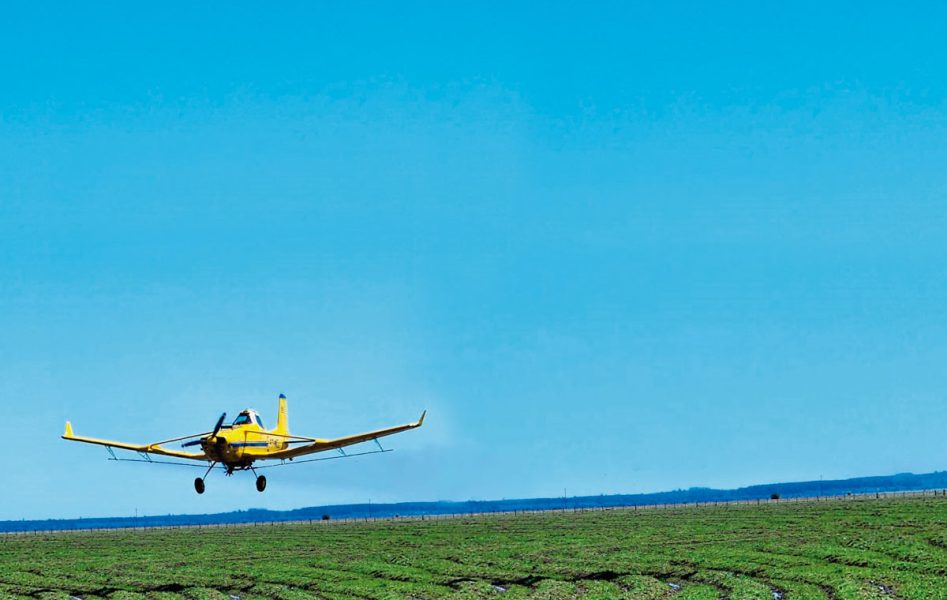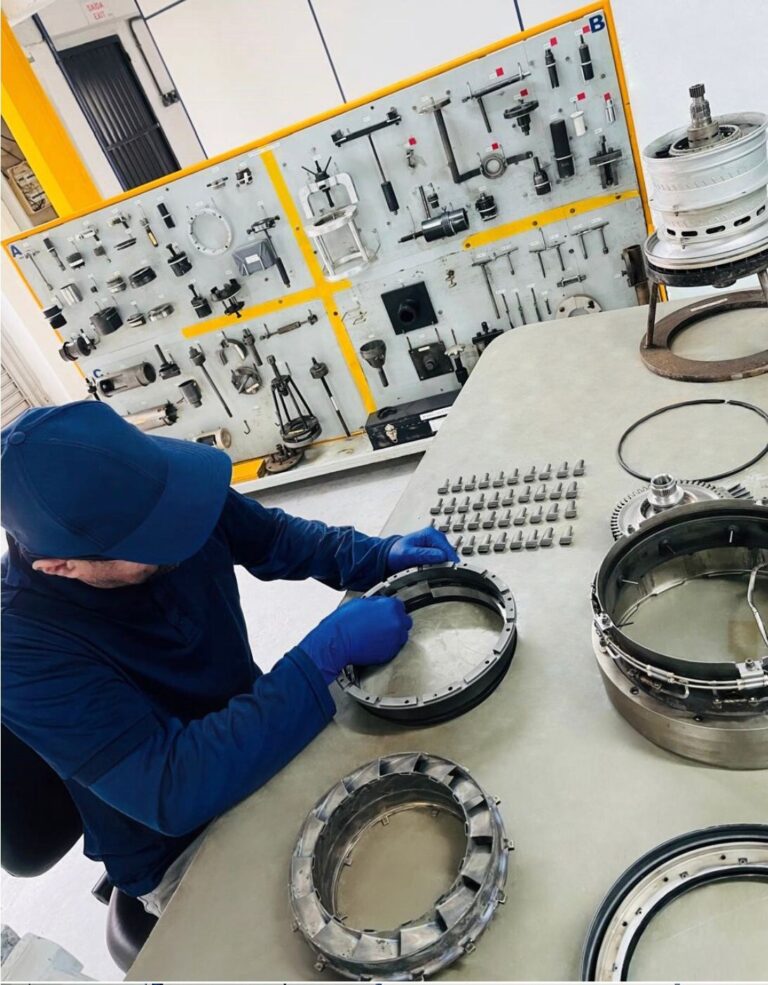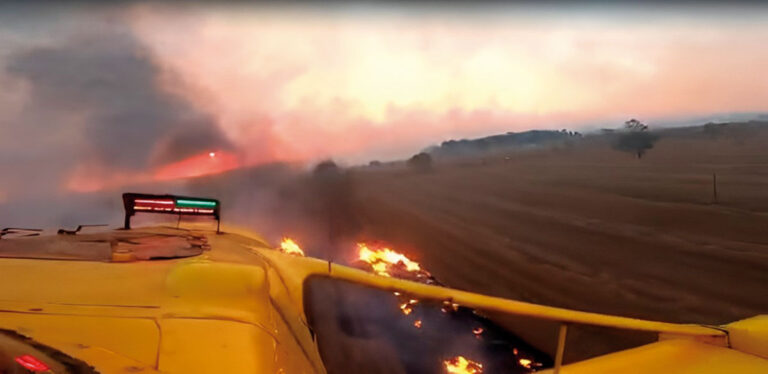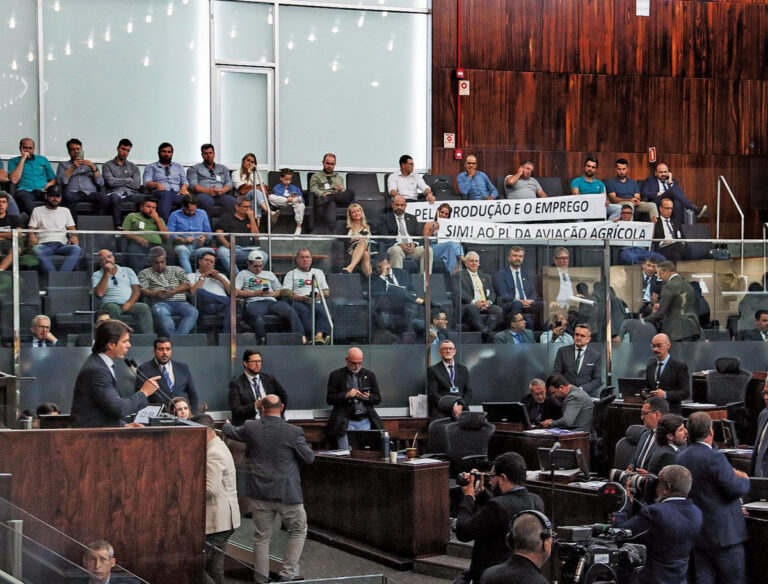The 2025/2026 agricultural year began amid uncertainties triggered by global trade tensions. The Brazilian aerial application sector is closely monitoring international developments. Recent tariffs imposed by the United States on countries such as Canada — a supplier of engines for Air Tractor aircraft — have raised concerns.
As of the end of September, engines had not been directly taxed, but the possibility is worrisome. “The impact would be significant, including on parts, oil, and aircraft, depending on the application of the so-called reciprocity law,” noted economist and PhD in Administration Cláudio Júnior Oliveira Gomes, Chief Operating Officer of the National Union of Agricultural Aviation Companies (Sindag).
In response to this risk, the sector’s trade association has mapped and submitted to the Ministry of Agriculture the tariff codes of all essential products used in aerial operations, seeking exemption. The goal is to preserve companies’ competitiveness and ensure continued technological advancement. “It is essential to guarantee that airplanes, drones, and helicopters — all indispensable and complementary — continue to advance technically and maintain efficiency in the field,” he concluded.
DIVERSIFICATION
While the international scenario is cause for concern, the sector is undergoing a process of technological diversification, and according to Júnior Oliveira, there remains significant room for growth. The example of Mato Grosso reinforces this reality: the state concentrates 749 agricultural aircraft — the largest fleet in Brazil — mainly serving vast soybean and corn-producing areas. In the case of corn, there are crop stages in which aerial application is the only viable option, expanding market opportunities. Drones are also gaining space on smaller farms and for targeted applications.
In addition, according to the Perspectives for Agriculture report published by the National Supply Company (Conab) on September 18, in partnership with Banco do Brasil, the cultivated area is expected to increase in this new season. The forecast indicates a 3.1% growth compared to the 2024/2025 cycle, even with a 5.6% reduction in rice planting. The report projects increases of 3.7% in soybean area, 3.5% in total corn, and 3.5% in cotton.
OVERCOMING LOSSES
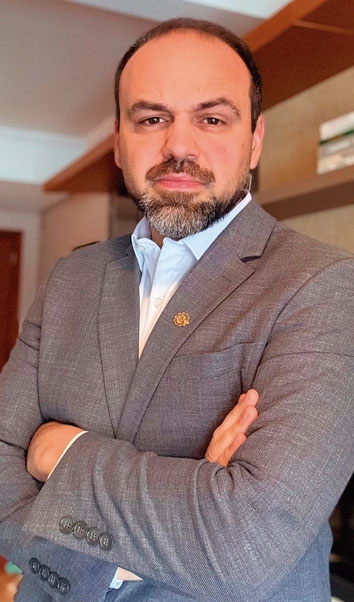
According to Júnior Oliveira, aerial application operators will need strategic preparation to offset — and even overcome — the losses resulting from the reduction in rice cultivation areas, amid the trend of soybean and corn expansion. This scenario particularly affects operators in Rio Grande do Sul, Brazil’s largest rice-producing state.
Data from the Rio Grande do Sul Rice Institute (Irga) indicate that 70% of the country’s rice production is concentrated in the state, which accounts for a significant share of aerial applications. A survey conducted by the Prohuma Institute for Scientific Studies shows that approximately 71% of rice fields in Rio Grande do Sul receive aerial spraying services.
“Thus, any reduction in area immediately impacts demand for services,” noted Oliveira. However, he emphasized that even with the contraction of a traditional crop, there are opportunities for companies to reposition themselves and maintain the sector’s presence across different crop profiles.
Reduction in Rice Planting to Align Supply with Demand
A scenario marked by a combination of record production, rising imports, and falling prices has left rice producers uneasy. The president of the Federation of Rice Growers’ Associations of Rio Grande do Sul (Federarroz), Denis Dias Nunes, points out that the current moment is delicate and has forced the development of strategies to mitigate risks and restore the crop’s competitiveness.
One of the approaches, he explains, is to seek new international markets while reducing the planted area. This movement is reflected in the Perspectives for Agriculture – 2025/2026 Harvest report released by Conab in September, which forecasts a 5.6% reduction in cultivated area.
A decrease in productivity is also expected, with total harvest volumes projected at 11.5 million tons — a 10.1% drop compared to the cycle that ended on July 31. Estimates from the Rio Grande do Sul Rice Institute (Irga) for the 2025/2026 harvest are similar to those from Conab: 920,081 hectares are expected to be planted, representing a 5.17% reduction compared to the 2024/2025 cycle.
CONTRAST
These figures contrast with those from the start of the previous harvest, when Brazil’s planted area expanded by 9.8% compared to 2023/2024, resulting in a production of 12.75 million tons. In Rio Grande do Sul, the increase was 7.5%, yielding 8.73 million tons of rice, according to Conab’s September 2025 update.
According to Federarroz’s director, this production surge was driven by technological investments, favorable weather conditions, and attractive prices at the time of planting. However, overproduction and declining domestic consumption led to a sharp fall in prices.
The sector also suffers from the absence of long-term public policies. Nunes argues that agriculture must be treated as a state policy to ensure security and predictability. “Today, we face high financial costs and competitive disadvantages compared to neighboring countries that do not face the same environmental, labor, and phytosanitary requirements as we do,” reinforces the Federarroz president.
In Nunes’s view, the current challenge is to balance supply and demand without losing competitiveness. “We have technology, quality, and environmental certifications that add value. But we need equilibrium to ensure the sustainability of rice cultivation,” he concludes.
He recalls that Brazilian milled rice has already secured a foothold in the U.S. market, despite recent tariffs. In fact, the U.S. purchases Brazilian rice for domestic consumption while exporting its own production.
CRISIS
Denis Nunes believes that the moment calls for maintaining balance to ensure the sustainability of the crop. Aerial application operators whose primary focus is rice cultivation are now seeking ways to reduce the impact of the shrinking rice-growing area, as they work to preserve the viability of their businesses.
Silvia de Souza Figueredo, partner and director of Arenhart Aviação Agrícola, explains that the reduction in planted rice area will directly affect the company’s service volume. “Rice is really our main activity — there is no other crop,” she says.
Arenhart is based in Uruguaiana, in the western border region of Rio Grande do Sul, where irrigated rice is predominant. In fact, during the 2024/2025 harvest, the municipality ranked first in the state’s rice production according to Irga. According to Silvia, the possibility of converting unplanted rice areas to other crops is low. “The soil conditions make large-scale soybean or corn cultivation unfeasible,” she explains.
In addition to rice, which operates in a cycle from September to February — including desiccant spraying, soil preparation, fertilizer, and pesticide applications — Arenhart also performs pasture seeding. This activity takes place from March through June or July, but both demand and service value are considerably lower. “Pasture seeding has been growing slightly each year, but it is still far from compensating for the reduction in rice area,” Silvia points out.
Despite the difficulties imposed by seasonality and tighter margins, Silvia emphasizes that the company is actively seeking ways to maintain its operational structure and readiness for the 2026/2027 harvest. “The costs are high, especially when aircraft remain grounded. But we make adjustments here and there to keep the fleet in good condition and ensure ongoing modernization,” she says.

Uncertainty and High Production Costs Challenge Soybean Farmers in Brazil
Expectations for a new record in Brazilian soybean production for the 2025/2026 harvest — with a projected 3.6% expansion in planted area, according to Conab estimates — are viewed with caution by producers. “We do not believe in these numbers. The increase in planted area should be around 1.2% to 1.4% compared to 2024/2025,” said Maurício Buffon, president of the Brazilian Soybean Producers Association (Aprosoja). According to him, it is still too early to predict a record harvest, citing limited access to credit due to high interest rates and the lack of subsidies as major obstacles.
In addition, as global trade tensions between major powers escalate, Brazil is feeling the effects of this unstable environment — particularly in its leading agricultural commodity.
The so-called “tariff surge” imposed by the United States — creating trade barriers for products from several countries — has not directly affected Brazilian soybean exports to the U.S. However, it has impacted meat exports, which rely heavily on soy for feed, thereby creating uncertainty for Brazil’s soybean crushing industry.
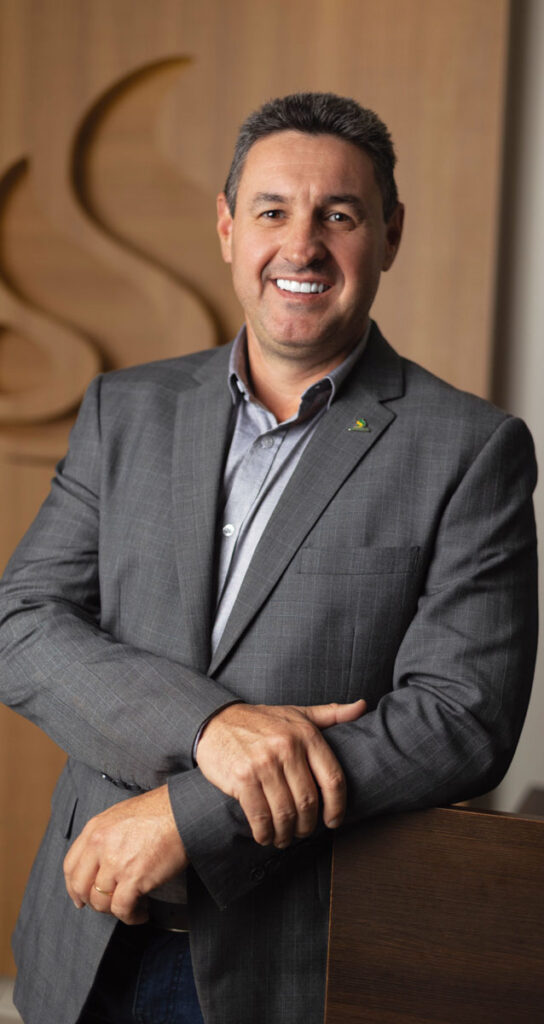
REACTION
This ripple effect impacts the entire value chain — in this case, the meat industry, of which soy is a critical component. Given this situation, Buffon expresses deep concern regarding the Brazilian government’s stance, warning of potentially “devastating” consequences for agriculture, especially for soybean production, if the current scenario continues.
Production costs remain one of the sector’s main concerns, particularly with respect to fertilizers and fuel. Buffon estimates that fertilizer costs for the 2025/2026 crop are already 25% to 30% higher than in the previous cycle.
This increase stems largely from Brazil’s dependency on foreign suppliers — about 85% to 90% of the fertilizers used in the country are imported, primarily from Russia, Belarus, and Canada. Moreover, diesel — essential for transportation and agricultural machinery — remains vulnerable to global price volatility, with much of it also imported from Russia. “As this trade war between the United States and Russia intensifies, we are deeply concerned that it could affect even Brazil’s fuel supply,” Buffon warns.
CURRENCY VOLATILITY
The Aprosoja president also cites the volatility of the U.S. dollar as a source of uncertainty in farm planning. Since soybean production costs are denominated in dollars while revenues depend on global market prices, any sudden fluctuation between R$5.30 and R$6.00 per dollar can mean up to a 25% swing in a producer’s financial results. Such instability makes planning difficult and increases the risk of losses at the time of sale.
Even so, many farmers have turned to the futures market, locking in roughly half of their production when purchasing fertilizers. Buffon acknowledges that ongoing trade tensions may reshape the global agricultural trade map, opening new opportunities in emerging markets such as Indonesia and other Southeast Asian nations. However, he notes that this process is slow and complex. “When the world’s largest economy enters a trade conflict, imbalance is inevitable,” he concludes.
Corn Cultivation Expected to Expand, Increasing Demand for Aerial Application Services
The 2025/2026 agricultural season begins with projections of a 3.5% increase in total corn-planted area compared to the previous cycle, considering all three planting periods within the same agricultural year. Despite this expansion, the Perspectives for Agriculture – 2025/2026 Harvest report from the National Supply Company (Conab) forecasts a total production lower than that recorded in 2024/2025.
According to Daniel Rosa, Technical Director of the Brazilian Corn Producers Association (Abramilho), this forecast is linked to the potential occurrence of the La Niña phenomenon during the second corn crop — which accounts for roughly 80% of Brazil’s total production. He explains that the safrinha (second crop) has become a key element in Brazilian agricultural management, promoting crop rotation and enhancing the sustainability of the production system.
When discussing sustainability, Rosa highlights the crucial role of aerial application in spreading fertilizers and crop protection products, which ensures greater speed and uniformity in field management. The Abramilho director notes that corn producers advocate for aerial application for various reasons — including ease of access to fields and operational efficiency — as well as its contribution to reducing environmental impacts and health risks.
SUSTAINABILITY
Daniel Rosa emphasizes the efficiency of aerial application for the distribution of agricultural inputs in cornfields. Although domestic demand for corn continues to grow — particularly due to the expansion of the ethanol industry, which uses the grain as a raw material in states such as Mato Grosso and Goiás — Brazil has consolidated its position as one of the world’s leading corn exporters.
Rosa notes that, on the international stage, even amid economic and geopolitical uncertainty, Brazilian corn continues to gain ground in Asian markets, especially China, while maintaining strong trade relations with the European Union and Iran. “Diversifying export destinations is a strategic move amid global uncertainties,” he stresses.
Country Diversifies Markets, but Environmental Barriers Imposed by the EU Raise Concerns
While Brazil’s corn competitiveness remains supported by high productivity and quality, international buyers are tightening environmental requirements. The European Union’s Anti-Deforestation Law, which classifies countries according to their risk of association with deforested areas, has become a major concern for the sector. “Brazil and Argentina were categorized as standard-risk, while the United States and China were placed in the low-risk category. It is a non-tariff barrier disguised as environmental policy,” criticizes Rosa.
He explains that the European legislation disregards Brazil’s Forest Code and the fact that the country possesses legally designated production areas. Furthermore, the measure penalizes nations with extensive native forests, ignoring their regional specificities.
In September, representatives from Abramilho and Aprosoja Brasil met with Argentine officials to discuss the issue and develop joint strategies to address the new European regulations. Rosa warns that Brazil could eventually be reclassified as a high-risk country in environmental terms.
Atmosphere of Uncertainty Keeps Aerial Operators on Alert
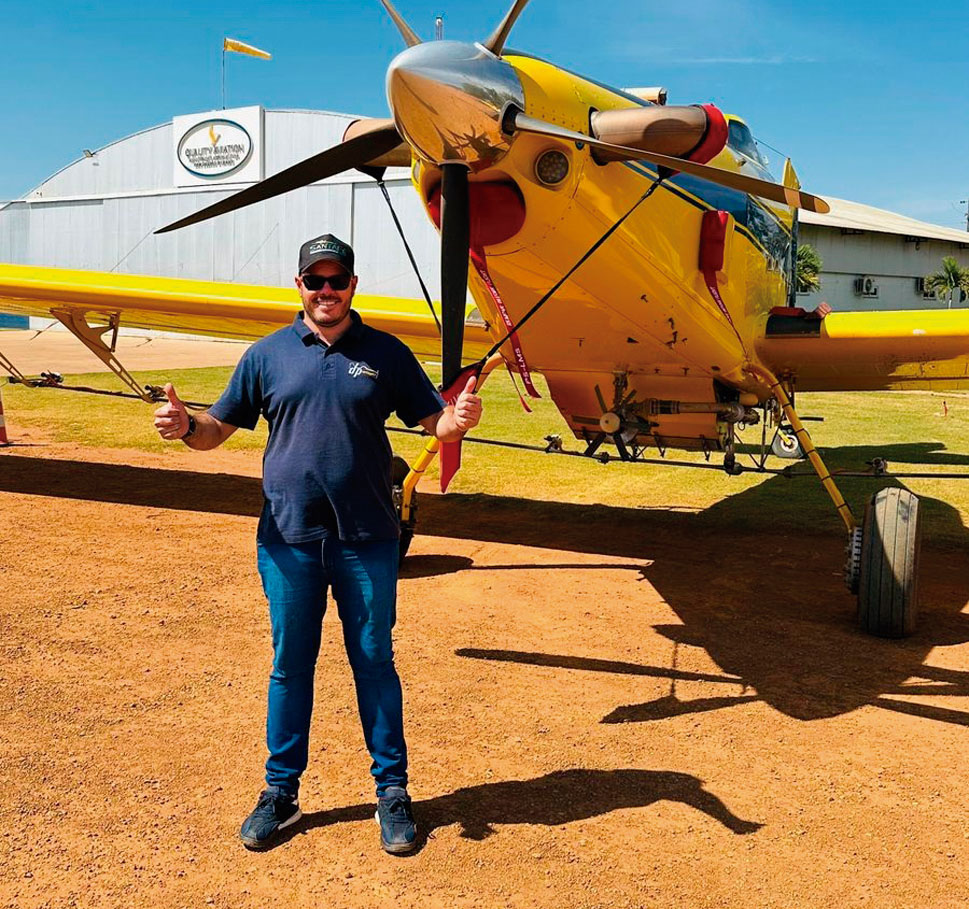
As the 2025/2026 harvest season begins to take shape, aerial application operators remain alert to developments during planting and to the possibility of rising operational costs. Some of these increases are already being felt by service providers — such as the sharp rise in aviation insurance premiums, driven by the number of accidents that occurred in the previous year.
However, the greatest concern lies in the sector’s dependency on imported equipment and parts priced in U.S. dollars. “Most aircraft components come from abroad. When the dollar rises, maintenance costs skyrocket. If additional tariffs are imposed due to trade tensions between Brazil and the United States, it could become unfeasible — the cost of parts could even double,” warns Carlos Henrique Ferronato, managing partner of Santa Fé Aviação Agrícola.
The entrepreneur, who operates mainly in the municipalities of Lucas do Rio Verde, Sorriso, Mutum, and Tapurah, in the state of Mato Grosso, is also worried about a possible reduction in the cotton-planted area. Although Conab projects a 3.5% increase in cultivated land, Ferronato — who is also an agricultural pilot — says that conversations with local producers indicate a tendency to reduce the number of hectares planted.

